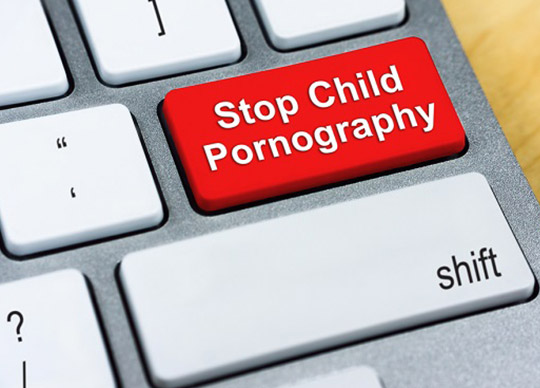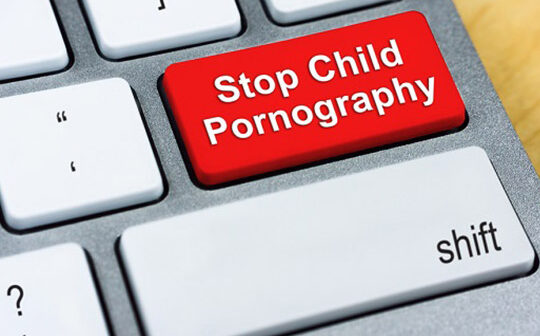
Written by Charani Patabendige, an Acting Research Analyst and a Research Assistant and at the Institute of National Security Studies (INSS).
The words “child pornography” themselves are abhorrent; the first thought is, how can there be porn involving children? The two words do not belong together. However, even though for the majority, this will be disgusting and remorseful, unfortunately, there are ill-motivated individuals driven by their deepest, darkest desires who fantasize about the nudity of innocent children. Adding to the burden, due to the world being digitalized, child pornography is now committed online and has become a transnational threat as well. Child pornography is often viewed as a moral or criminal offence. However, what is lacking is adequate attention to its implications as a national security concern. In light of this, it is high time to understand the laws concerning, threats posed by child pornography and its ramifications for national security, investigating challenges and the need for coherent recommendations.
(The United States Department of Justice, 2020) has defined child pornography as, “a form of child sexual exploitation. [it is]any visual depiction of sexually explicit conduct involving a minor (persons less than 18 years old). Images of child pornography are also referred to as child sexual abuse images. The rapid growth of the Internet and sophisticated digital technology goes hand in hand with the alarming surge in the child pornography industry. Child pornography content can be easily accessed across various online platforms, encompassing social networks, file-sharing sites, photo-sharing platforms, gaming devices, and even mobile applications. Moreover, perpetrators of child pornography can convene on Internet forums and networks to exchange their inclinations, exploits, and encounters involving the abuse of children, besides engaging in the buying, selling, and exchanging of illicit images.
Child pornography poses multi-faceted risks for individuals as well as societies, endangering privacy and rights. Children are victimized by pornographic content, and they may be repeatedly traumatized as long as this content exists. Additionally, parents and other family members feel helpless and hopeless in such situations. Moreover, the survivors of such tragedy will have to live with trauma, and restoring the sense of calmness that was present before the incident becomes challenging. This showcases the psychological and emotional toll on the victims and survivors.
Laws
It is also imperative to look into the Budapest Convention, which includes a specific provision, in Article 9, that explicitly prohibits child pornography. The Optional Protocol on Child Pornography, in Article 3, mandates state parties to criminalize sexual exploitation, which it specifically defines as the ‘sale of children.’ Similarly, the Lanzarote Convention, established by the Council of Europe, outlines behaviour constituting sexual exploitation and sexual abuse in its Articles 18-23. The European Union Directive 2011/93 also addresses sexual exploitation by referring to acts like making a child participate in pornographic performances, knowingly attending pornographic performances involving children, making a child participate in child prostitution, and engaging in sexual activities with a child in connection with prostitution. Furthermore, the United Nations Secretary-General’s Bulletin on Special Measures for Protection from Sexual Exploitation and Abuse defines sexual exploitation as any actual or attempted abuse of vulnerability, differential power, or trust for sexual purposes. This includes but is not limited to, profiting monetarily, socially, or politically from the sexual exploitation of another individual.
When looking at the Sri Lankan context, the Sri Lankan constitution, the supreme law of the country in its Article 27 (13) Chapter VI states that the State has to promote with special care the interest of children and youth to ensure their full development, physical, mental, moral, religious and social, and to protect them from exploitation and discrimination. The Obscene Publications Ordinance No. 4 of 1927, the Vagrants Ordinance No. 4 of 1841, and the Penal Code do include laws related to pornography. Nevertheless, they do not offer a clear interpretation of terms about child pornography. Furthermore, the Penal Code Section 286A introduces a new offence targeting “obscene publication and exhibition relating to children” below the age of 18. Additionally, Section 286C has been introduced to criminalize the storage or distribution of child pornography through email and the Internet.
National security implications
What is seldom discussed is the implications of child pornography on national security. For the majority, national security is about territorial integrity and the physical aspect of security rather than the invisible menaces. One such intangible threat, which is hard to beat, is child pornography. Child pornography has many security violations. It has a direct link to organized crimes which have human security violations and economic security threats. It is also a cyber crime, it also facilitates terrorist financing and it also affects country’s reputation. Organized criminals generate money by commercially exploiting children in ways including child trafficking. Child pornography rings are one such example and it is not a novel situation. One such example is the Wonderland Club, an international online pedophile ring that ran for four years before finally being smashed by the biggest international police operation, namely “Operation Cathedral” and another raid was done namely Operation Avalanche. (Eddy, 2020) has stated that German authorities report that they have dismantled a highly sophisticated child pornography network that traded “unimaginable images” through the internet. In addition, money generated by child pornography is not only violation of child rights, it is detrimental to the integrity of financial system since it generates black money. Apart from organized crimes, another main threat is it affects cyber domains affecting cyber security in light of privacy and data breach risks and exploitation of vulnerabilities. There are also a threat of terrorist financing, since terrorists or radicalized individuals may exploit child pornography as a means of recruitment of vulnerable individuals into supporting their ideologies. Further, it is detrimental to the reputation of the country which is a soft power threat since this will deem the country incapable of tackling such an issue.
Challenges
Primarily, there are several drawbacks in the existing laws that hinder the effective criminalization of child pornography. In the context of Sri Lanka, these legal shortcomings make it challenging to mitigate and prevent the spread of child pornography. One of the major issues is the lack of a specific legal definition for child pornography within Sri Lanka’s legal framework, leaving a significant gap in addressing this heinous crime. The Children and Young Persons (Harmful Publications) Act No. 48 of 1956 is another example of legislation with limitations. Section 2 of this Act applies to all publications, such as books or magazines, which are likely to be accessed by children or young individuals. These publications primarily consist of visual stories, with or without accompanying written content, portraying (a) the commission of a crime, (b) acts of violence or cruelty, or (c) incidents of a repulsive or horrifying nature. The aim is to prevent such publications from corrupting children or young individuals who might come across them. While this Act effectively criminalizes obscene pictorial materials, including child pornography, nonetheless it falls short in addressing the realm of virtual content, which remains a critical drawback when criminalizing child pornography. In addition, even though there are laws mentioned, unfortunately, pornography is not recognized as a cybercrime in many countries including Sri Lanka. Therefore, it is pivotal to rectify these weaknesses, drawbacks as well as loopholes.
Global Initiative on Transnational Organized Crime has stated that the primary challenge in combating cybercrimes, including child pornography, lies in overcoming identity protection measures that shield the true perpetrators. The Internet remains relatively unregulated, and there is a lack of legislation specifying the responsibilities of Internet Service Providers (ISPs) regarding proxy servers and payment sites that do not maintain transaction records and it is high time to correct these drawbacks. The second challenge involves the need for international cooperation to gather information about criminal groups operating beyond national borders. Since child pornography is an extraterritorial country must strengthen their relationships and drive for the same cause, which is to prevent child pornography.
Therefore, it is clear how child pornography has become a crime mainly on virtual platforms, with many security implications. As discussed, it affects security in various ways and leads to disastrous consequences. Hence, it is high time to address legal gaps to prevent child pornography. In addition to rectifying the above-mentioned loopholes, it is also crucial to advocate for child rights and encourage a whistleblowing culture to deter and prevent child pornography.






